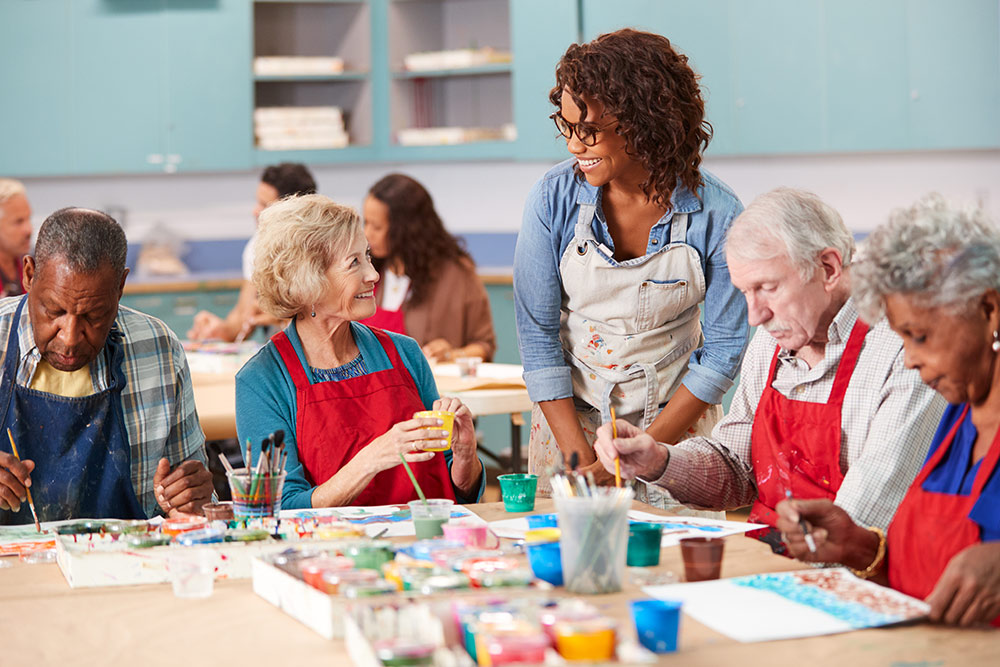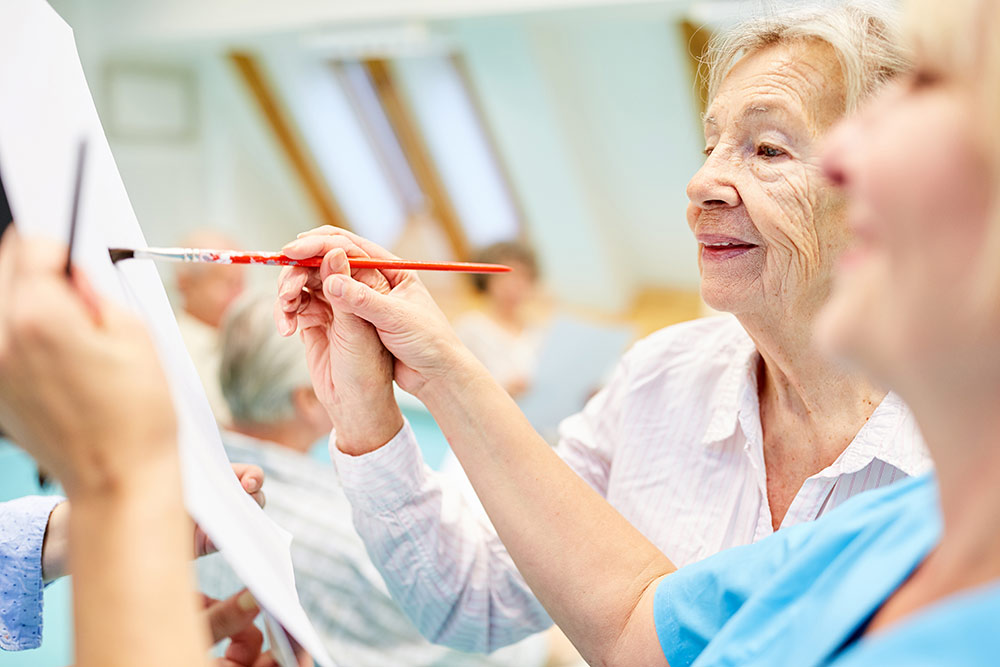Have you ever noticed how listening to an upbeat song can suddenly make you feel happy and positive? Or how a quote from a book can evoke deep emotions in readers?
That’s because art, in any form, plays a significant role in one’s life. It may well be physical activity, but it has a powerful effect on a person’s mental and emotional being. So much so that even health experts consider it a form of therapy.
You don’t have to be a talented painter or an art enthusiast to benefit from it. You just need to immerse yourself in it to see how it can positively change your perspective and overall health.
Art therapy is not a new technique used to improve the quality of life of seniors. In fact, lots of senior living in Clinton Township provide different art activities so their elderly residents can enjoy and reap its benefits.
Before going into the full details of its benefits, here’s everything you need to know about art therapy.
What is Art Therapy?
Art has been pouring its therapeutic power into individuals since the dawn of time. However, it was not until the 1940s that the medical society started recognizing art therapy as a form of psychotherapy for people with mental health problems.
Since then, it has thrived and became a well-known therapeutic technique for those with mental problems and people who want to enrich their lives. So, what is art therapy?
Art therapy refers to a method used to improve a person’s physical, mental, and emotional well-being through creative expression. It stems from the belief that creativity and self-expression foster healing from any kind of trauma, negative emotions, and crises.
Additionally, it encourages people to understand and process their emotions through artistic methods, which can eventually lead them towards self-discovery.
How is Art Therapy Done?
Art therapy is done through active art-making with the help of a licensed professional called an art therapist. These professionals are trained both in art and therapy. They facilitate the sessions and guide patients toward achieving what they want, whether it’s healing, coping from a trauma, or life fulfillment and satisfaction.
Everyone can engage in art therapy: couples, families, and even senior communities. An elderly like you can also participate in a one-on-one session with an art therapist if you prefer.
There are plenty of ways to do art therapy, depending on your preferences and interests. This includes:
- Painting and drawing using different mediums.
- Sculpting
- Carving
- Doodling and scribbling
- Molding with clay
- Collage making
- Coloring
- Photography
Besides these art techniques, there are also several other creative therapies you can engage in, like writing, dancing, music, and drama therapy.
Art therapists provide these services in different settings, such as mental health institutions, rehabilitation centers, outreach programs, clinical facilities, schools, wellness centers, corporate facilities, and senior living communities.
If you want to experience the healing capabilities of art, then make sure to choose the best senior living in Clinton Township that offers art therapy.

Benefits of Art Therapy for Older Adults
Creative arts, like painting and drawing, are more than just hobbies. According to scientific research, engaging in artful pursuits have plenty of incredible benefits to the different aspects of a senior’s life.
The different forms of creative expression through art therapy can help you reap the following physical, mental, and emotional advantages.
1. Enhances Cognitive Abilities
Who would have thought that creatively making something out of nothing can significantly impact your brain health?
According to studies, art therapy positively impacts the brain regions responsible for creativity, memory, learning, and critical thinking. Furthermore, it enhances your brain function, which in turn slows down the aging of your brain cells.
As a result, this prevents you from developing brain disorders, such as dementia and Alzheimer’s disease.
2. Helps Deal with Stress and Traumatic Experiences
Even seniors experience different kinds of stress every day—from financial and family problems to moving to a senior home or losing life’s purpose.
One way to battle stress and cope with the problems that take a toll on your mental health is through art therapy. This kind of therapeutic activity takes your mind off negative things and focuses it on the beauty of art.
It allows you some downtime to pour all your feelings and emotions into what you’re doing until you have a clearer head and perspective. Thus, allowing you to tackle your problems with a better mindset.
Moreover, studies recommend art therapy to seniors experiencing mental illness, such as:
- Depression
- Anxiety and panic disorders
- Post-traumatic stress disorder
- Chronic stress
3. Promotes Better Physical Functions
Health experts consider art therapy a holistic form of activity as it also promotes better physical health.
For example, seniors who engage in painting and drawing also have the opportunity to exercise their hands, arms, and fingers. This enhances their motor skills, dexterity, and muscle coordination.
Art activities may be light and simple compared to other forms of exercise. But over time, this kind of “light” physical workout can add up and result in better circulation. Plus, it can also help alleviate pain and inflammation caused by chronic illnesses like arthritis and hypertension.
4. Improves Social Skills
Art therapy sessions, especially ones conducted at a senior living in Clinton Township, allow seniors to meet fellow residents. They can interact and connect with their “classmates” through their shared experiences in art.
These social interactions help ward off mental health illnesses and social isolation in older adults.
5. Greater Self-Expression and Purpose Discovery
Art therapy is an activity that can be enjoyed by every senior, including those with physical limitations (deaf, blind), mobility problems, and chronic health conditions. Art provides them with a way to express themselves. Also, it can help them understand and process all the feelings and emotions they lock inside of them.
This greater kind of self-expression will eventually result in increased self-awareness and renewed perspective. Furthermore, the rewarding feeling that comes from creating art can help seniors discover their purpose in life and keep them empowered against life challenges.



